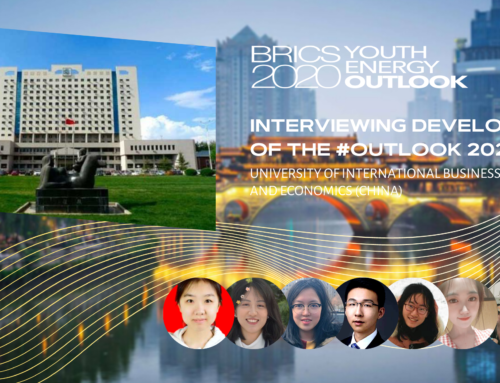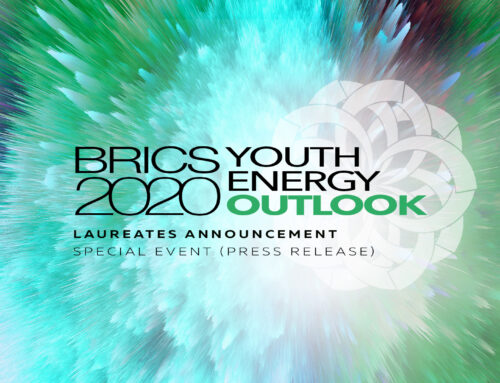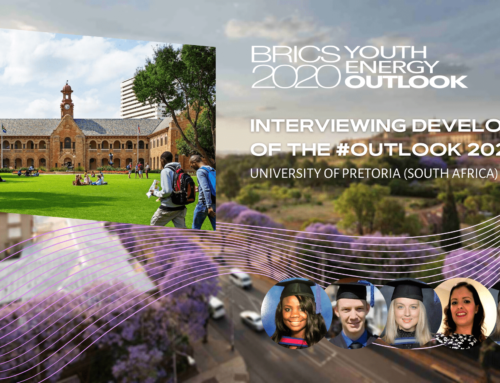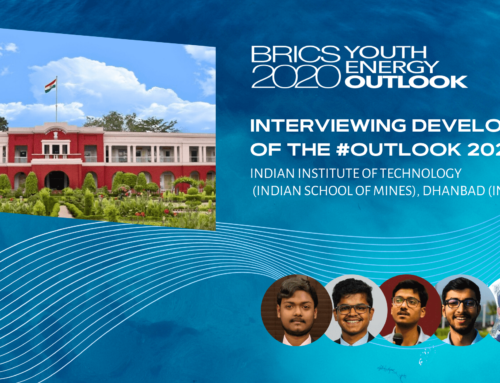Just like a year ago, we are pleased to introduce to you the teams who develop the BRICS Youth Energy Outlook 2020. The first team we would like to introduce to you comes from Brasilia, the capital city of the Federal Republic of Brazil. A lovely research group of 8 very talented young people has united George Harrison (Student), Emilly Caroline (Technical Advisor), Guilherme Leite (Student), Melissa Vale (Student), Itiane Almeida (Student), Samuel Medeiros (Student), Luísa Schiavon (Chemical Engineer) led by Kamila De Sousa Aben Athar Alencar (Student).
The University of Brasília (Portuguese: Universidade de Brasília, UnB) is a federal public university in Brasília, the capital of Brazil. It was founded in 1960 and has since consistently been named among the top five Brazilian universities and the top twenty universities in South America by Times Higher Education (THE).
Aleksandra Agababova, PR-Manager (BRICS YEA), interviewed the team from UnB and asked a few questions about their vision of the Brazilian energy sector and, of course, participation in the BRICS Youth Energy Outlook 2020 as developers.
Where and how did you meеt?
Most of us are undergraduate and graduate students of the University of Brasília. Since we have different academic backgrounds (Engineering and International Relations), we designed this group specifically for the BRICS Youth Energy Outlook 2020, to provide a better insight on the Brazilian energy sector.
What are your general interests?
Our main interest is to promote cooperation and development of Brazil. For this event, our goal is to develop and promote new understandings on Energy, aligning different types of knowledge in a holistic approach.
What projects have you already realized?
Our group had participated and been awarded in the National Defense Academic Congress (held by the Ministry of Defense of Brazil). Moreover, one of the team members participated as a delegate in the 22nd Youth Assembly, which aimed at Agenda 2030 projects and discussions. Lastly, Two group members were selected as Youth leader to represent young Brazilians at CEM10 / MI-4 that was held in Vancouver, Canada, this event brought together international actors composed of a group of advocates and clean energy leaders to advance clean technology and innovations.
Which rules do you use for distribution of tasks between members and for prioritization?
The first rule was to assign tasks according to each member’s academic background and interests, and together, the team discussed the priorities of the group.
In your opinion what’s the main principle that makes your teamwork successful?
Our communication is based on a safe and fruitful space for dialogue, especially about different ideas and approaches, so that the members can express their creativity fully and bring new types of knowledge to the group, promoting a positive experience for all.
What contribution to your team experience do you hope to get during your work on the BRICS Youth Energy Outlook-2020?
We hope to obtain and exchange different approaches on Energy, get to know how the others countries faced the energy challenges present in Brazil today and learn how to contribute to positive change in the energy sector.
How did you know about the BRICS YEA and the BRICS Youth Energy Outlook-2020?
The group first knew about the BRICS Youth Energy Outlook-2020 in the Webinar “BRICS – The Image of Energy 2020+”, held by BRICS YEA, in April 2020.
In your opinion why is it beneficial for the youth from the BRICS countries to cooperate?
Youth has an important role in the promotion of new ideas, innovation and cooperation. Having the possibility to engage in an international platform for cooperation, such as BRICS YEA, BRICS youth has the opportunity to debate and exchange ideas on joint development and cooperation, since our countries face similar challenges. Youth is the future and, thus, the future of our countries relies on our hands. Therefore, engaging in cooperation since our young years is a decisive factor for building what kind of country we want our country to become.
How do you evaluate the role of the BRICS YEA in the achieving global sustainable development?
Since its foundation, BRICS YEA has been reaffirming the importance of the Agenda 2030. Bringing a dedicated focus on youth, BRICS YEA constitutes in an important player in the promotion of SDGs in a short, medium and long-term perspectives, taking into consideration each country’s particularities and similarities.
In your opinion what challenges the BRICS countries will be facing in the nearest future in the field of energy development? How can the youth face these challenges?
One of the main challenges is to make it possible for everyone to have access to energy, preferably clean, at reasonable costs. Another challenge will be to eliminate energy generation from sources that generate greenhouse gases. The challenges can be faced with the help of initiatives such as BRICS YEA, which allow the voice of youth to be heard, bringing new ideas and with that, youth can bring new solutions into discussion.
Your chosen topic is related to energy storage technologies. What would you like to place emphasis on during your work?
We would like to emphasize that cooperation is important to develop the efficiency and new energy storage technologies. Also, there is the need for a regulation in energy and smart storage in Brazil. Lastly, we would like to highlight the strategies suggested by the group, developed from the elected methodology.
In your opinion what is the most appropriate way to increase energy storage capacity in Brazil?
Energy storage is the future of the Energy sector. However, the topic still is under construction in Brazil. Thus, it would be appropriate for Brazil to have our government recognizing the importance of this sector, and promote the development of new and clean technologies along with private sector and the Academia (triple helix format), and through international cooperation.
We thank the team of the Univeristy of Brasilia for this interview. There is more to come!





